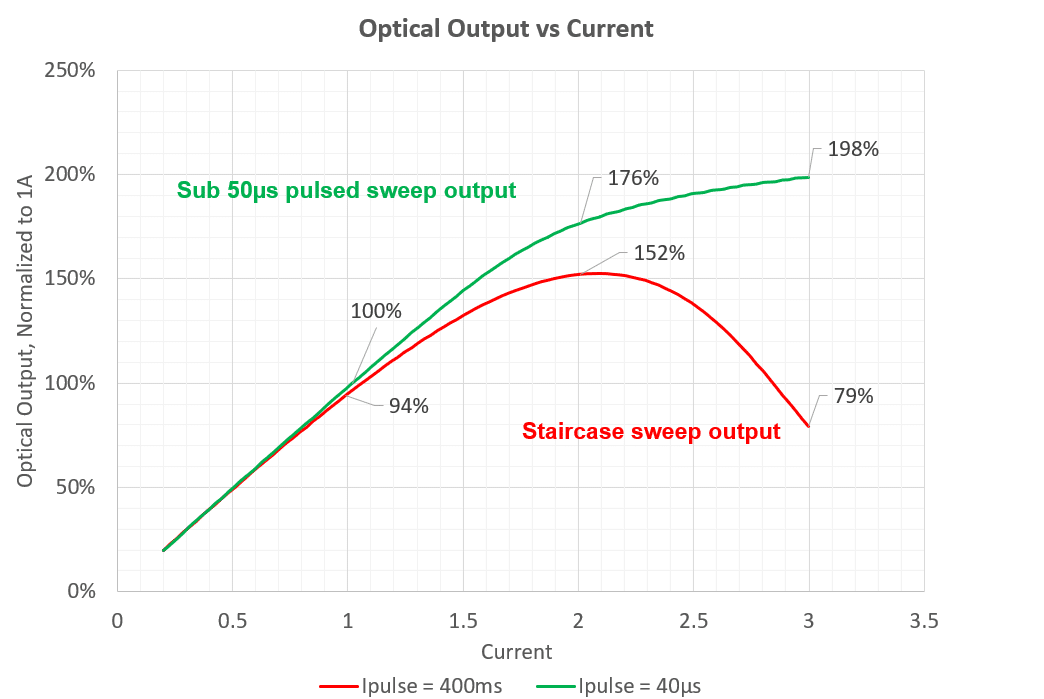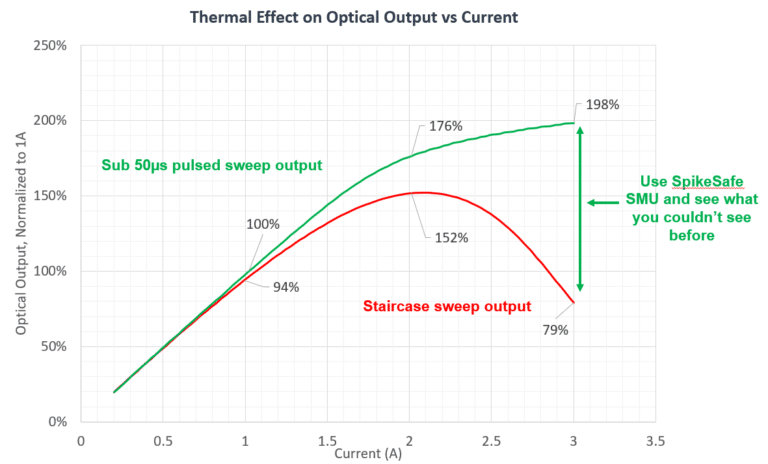To determine true LED characteristics, use a fast precise sub 50µs pulsed SMU.
LED manufacturers, especially UV LED manufacturers, strive to produce more light with their devices and recategorize them for additional use cases. LED designers want to see the true device characteristic to match laboratory data with design simulations. To accomplish these goals, droop due to heating during testing must be addressed. Vektrex’ Spikesafe SMU delivers sub 50µs fast pulses that reduce heat during testing allowing the true LED characteristic with droop to be seen.
LED products are typically characterized using methods that increase device heating. These outdated methods, using DC current, long pulses or staircase sweeps involve sweeping devices through a current sweep consisting of stair-case like steps of increasing current. At each step, heat accumulates in the device, raising the junction temperature. By the end of the sweep the junction temperature is so high the LED output starts to degrade significantly. This temperature droop masks the true characteristics of the LED.

SpikeSafe SMU accurately pulses and digitizes in the sub-50µs region. Such short pulses produce little heating, and the off-time between pulses allows the minimal heating produced during a pulse to dissipate so that a constant junction temperature is maintained throughout the test. The result is a true undistorted LI characteristic which has been impossible to see until now.
Compare SpikeSafe SMU Pulse Sweep Results with Traditional Staircase Sweep Results
The following chart compares the two test methods, sub 50µs pulse sweep versus staircase sweep, applied to the same LED. The plot trajectories are similar up to the nominal 1A operating point. Similar, but not identical. Actually, the long pulse plot has already drooped to 94% at this point.

The SpikeSafe SMU sub-50µs pulse sweep method shows LED light production is linear up to 1.5X the nominal current. This is an important finding as it means the device may be able to be overdriven in some customer applications without the need for a design change. The long pulse plot shows the device “rolling over” at 2A; in fact, it still has increasing light output at 3A.
The true LI characteristic revealed by the sub 50µs short pulse technique allows designers to quickly match lab results with simulation based expectations and make design improvements.
Get More Value from Your Existing Characterization Solution
Designers can finally see what they couldn’t see – the true LED characteristic at higher currents. Specify the SpikeSafe SMU for your existing test environment to leverage sub 50µs pulse widths, accelerate innovation, and reduce time-to-market for your devices.